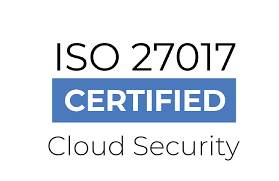CLOUD SECURITY MATURITY ASSESSMENTS

What is Cloud Security Maturity Assessments?
A Cloud Security Maturity Assessment is a systematic evaluation of an organization’s cloud security posture. It helps you understand your current security practices, identify areas for improvement, and plan your journey towards a more robust and mature cloud security program.
Importance of Cloud Security Maturity Assessments?
- Identify Vulnerabilities: Uncover weaknesses in your cloud security controls, allowing you to prioritize and address critical areas of risk.
- Benchmark Progress: Measure your security posture against industry best practices and maturity models, highlighting areas for improvement.
- Improve Incident Response: Assess your ability to detect, respond to, and recover from security incidents in the cloud environment.
- Verify Adherence: Ensure your cloud environment complies with relevant regulations and industry standards, avoiding potential fines and reputational damage.
- Reduce Audit Costs: Proactive assessments can streamline external audits by demonstrating established security controls and compliance efforts.
- Maintain Trust: Build trust with customers and stakeholders by showcasing your commitment to data security and privacy in the cloud.


Benefits of Cloud Security Maturity Assessments?
Enhanced Security:
- Identify vulnerabilities: Uncover weaknesses in your cloud security controls, allowing you to prioritize and address critical areas of risk.
- Benchmark progress: Measure your security posture against industry best practices and maturity models, highlighting areas for improvement.
- Improve incident response: Assess your ability to detect, respond to, and recover from security incidents in the cloud environment.
Stronger Compliance:
- Verify adherence: Ensure your cloud environment complies with relevant regulations and industry standards, avoiding potential fines and reputational damage.
- Reduce audit costs: Proactive assessments can streamline external audits by demonstrating established security controls and compliance efforts.
- Maintain trust: Build trust with customers and stakeholders by showcasing your commitment to data security and privacy in the cloud.
Our Approach
1. Defining Goals and Scope:
- Identifying Objectives: What specific aspects of cloud security are we assessing? Common goals include identifying weaknesses, measuring progress, demonstrating compliance, or benchmarking against industry standards.
- Choosing a Framework: Several frameworks exist, like the Cloud Security Maturity Model (CSMM) or Cloud Controls Matrix (CCM). Selecting one aligning with your goals and the specific cloud provider(s) used.
- Determining Scope: Specifying which cloud services, data types, and security domains will be assessed. Considering factors like risk levels, criticality, and compliance requirements.
2. Data Collection and Assessment:
- Gathering Information: Collecting relevant documentation, policies, procedures, and configuration settings from the cloud provider and your organization.
- Interviews and Workshops: Conducting interviews with key personnel responsible for cloud security, compliance, and operations. Workshops can gather information and involve stakeholders in the process.
- Testing and Evidence Gathering: Employing automated and manual testing tools to assess security controls, compliance adherence, and cloud resource utilization. Gathering evidence to support findings.
- Analysis and Scoring: Evaluating the collected information against the chosen framework's criteria. Assigning scores to reflect the maturity level for each security domain.
3. Reporting and Recommendations:
- Preparing a Report: Documenting the assessment findings, including scores, strengths, weaknesses, risks, and vulnerabilities identified.
- Providing Recommendations: Offering actionable steps for improvement tailored to your specific environment and needs. Prioritizing recommendations based on risk and impact.
- Presenting Findings: Sharing the report with relevant stakeholders and discussing the recommendations, fostering collaboration and acceptance.
4. Remediation and Follow-Up:
- Developing a Remediation Plan: Creating a plan to address the identified weaknesses and improve security posture. Defining timelines, responsibilities, and resources needed.
- Implementing the Plan: Executing the remediation plan, tracking progress and making adjustments as needed.
- Continuous Monitoring: Establishing ongoing monitoring of security controls and cloud environment configurations to identify and address emerging issues.
- Future Assessments: Scheduling regular assessments to track progress, measure the effectiveness of improvements, and adapt security practices as needed.








